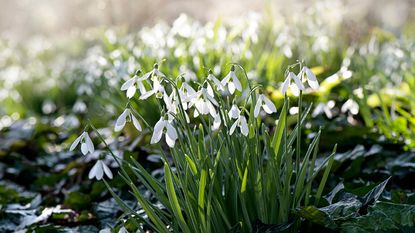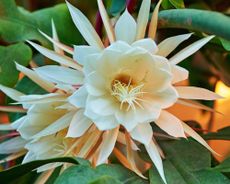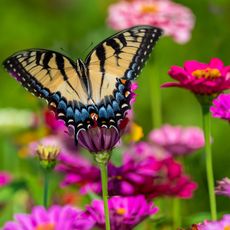Snowdrop Bulb Information: Learn About The History Of Snowdrops


Snowdrop plants have long been a welcome addition to flower gardens and landscapes. Among the first blooming bulbs to begin to flower, usually in late winter or early spring, delicate snowdrops are highly sought after. These diminutive plants, which commonly pop up through snow, offer growers a small glimmer of hope that warm springtime temperatures are on the way. Though commonly found throughout the United Kingdom and in some areas of the United States, it is thought that the plants were introduced and then began to spread and naturalize.
History of Snowdrops
Throughout history, snowdrop flowers have played a symbolic role. Signifying purity, hope, and even sympathy, these small, pristine white flowers have gained a dedicated following throughout the years. While many cultures made special note of the snowdrop in origin stories related to the creation of snow and in reference to the shift from winter to spring, those in Victorian times viewed the snowdrop flower as quite unlucky. In fact, the sight of a snowdrop was considered to be a sign of possible death and misfortune.
Snowdrop Bulb Information
While very similar to the untrained eye, there are actually many different species and varieties of snowdrop flowers. Generally, species differ in regards to the size of the flower and green marking patterns on the blooms. While some gardeners may not notice these intricacies, true galanthophiles are able to appreciate these differences. Many may even go to great lengths (and costs) to procure these cultivars, ultimately increasing the diversity of the plants within their own personal snowdrop collections. Luckily, for those of us without extensive experience growing snowdrops, many more common (and less expensive) varieties are available for the home gardener. Cold tolerant and resistant to many pests like deer, snowdrops are an excellent choice to those in desperate need of early flowering plants. Snowdrop bulbs planted in the fall, when allowed to properly chill, will bloom in late winter to early spring. Bulbs should be planted immediately, and should not be allowed to dry out. Well-drained locations which receive shade throughout the summer are ideal. In order for the bulbs to reproduce and begin to naturalize, make certain that they are located in a place where they will not be disturbed. With simple garden preparation, growers will be rewarded with lovely white spring blooms for years to come.
Gardening tips, videos, info and more delivered right to your inbox!
Sign up for the Gardening Know How newsletter today and receive a free download of our most popular eBook "How to Grow Delicious Tomatoes."

Tonya Barnett has been gardening for 13 years. Flowers are her passion. She has trasformed her backyard into a cut flower garden, which she regularly chronicles on her YouTube channel http://www.youtube.com/@tonyawiththeflowers.
-
 5 Night-Blooming Houseplants – Grow An Indoor Moon Garden
5 Night-Blooming Houseplants – Grow An Indoor Moon GardenThere is something uniquely special about night-blooming houseplants. Set the scene for a magical evening indoors with these fragrant flowering beauties.
By Amy Grant
-
 Beautiful Butterfly Garden Ideas: 10 Ways To Attract Pretty Pollinators To Your Yard
Beautiful Butterfly Garden Ideas: 10 Ways To Attract Pretty Pollinators To Your YardBringing butterflies to your backyard is one of the most important ways you can enhance wildlife, boost pollination and improve biodiversity. These 10 butterfly garden ideas can get you started
By Mary Ellen Ellis